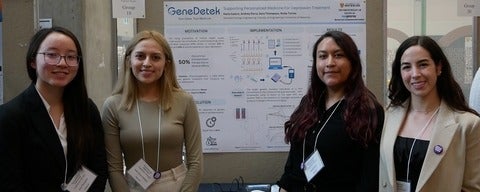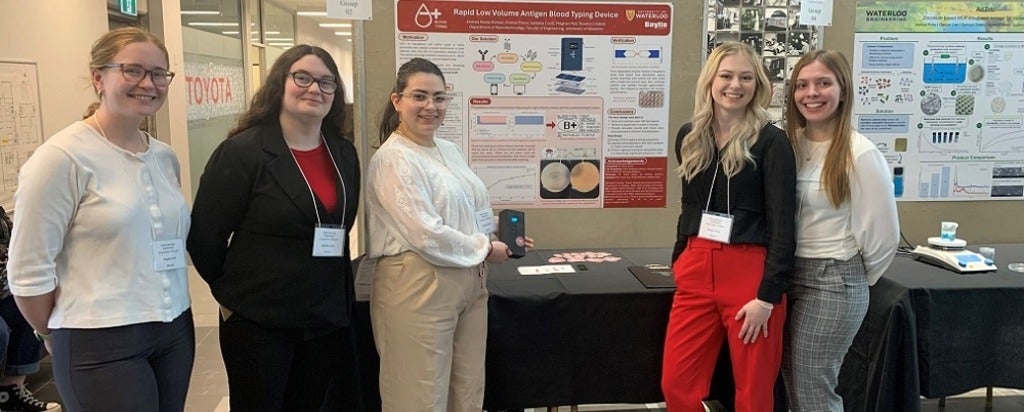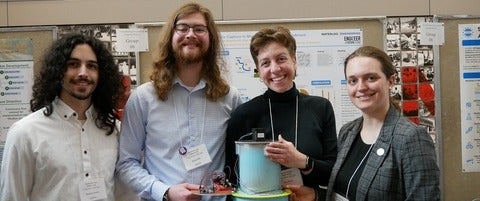A winning start in quantum innovation
Congratulations to a team of first-year Nanotechnology Engineering (NE) students who took first place at the HardHaQ Quantum Hardware Hackathon! The event was open to undergraduate teams from across North America.
Focused on hardware, the competition offers students an opportunity to gain experience with tools and systems driving quantum technologies.
Teammates Philip Szymborski, Arjun Mahes, Prithvi Singh and Keegan Mark were excited to have the opportunity to work in the quantum space. Mark learned of the event through Quantum Club and invited his friends to join.
The challenge in the competition was to optimize ion traps through computer simulations and geometric modelling, and they only had a week to do it!









